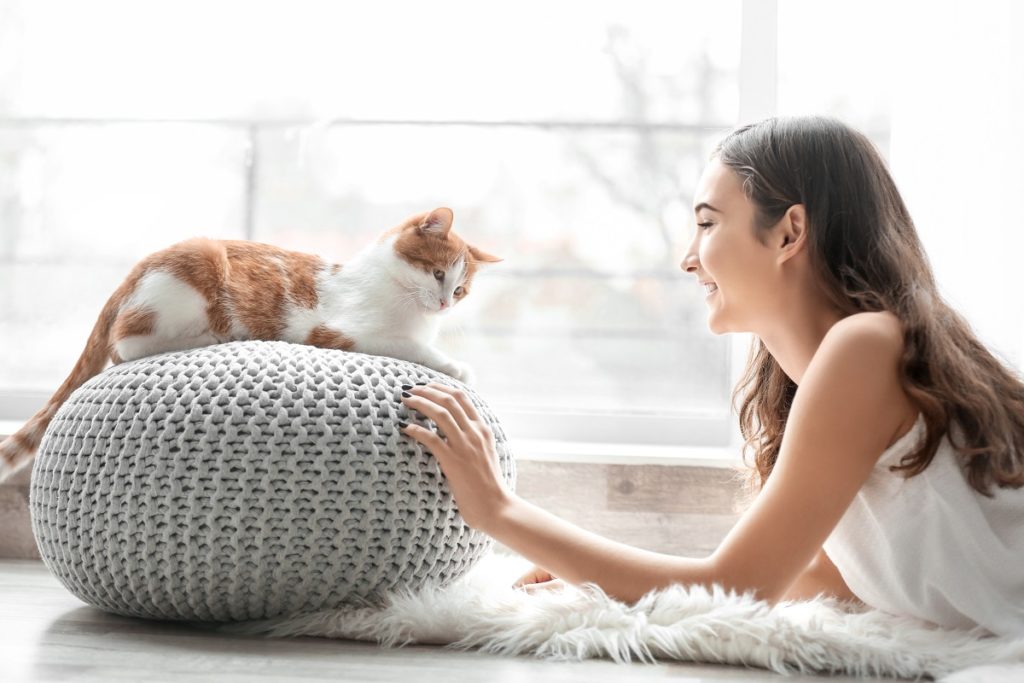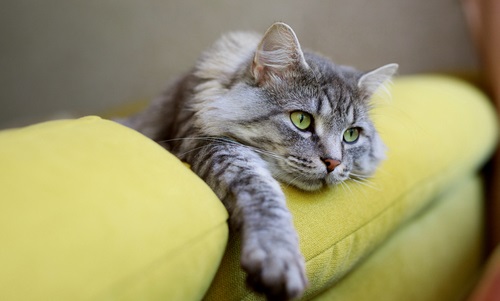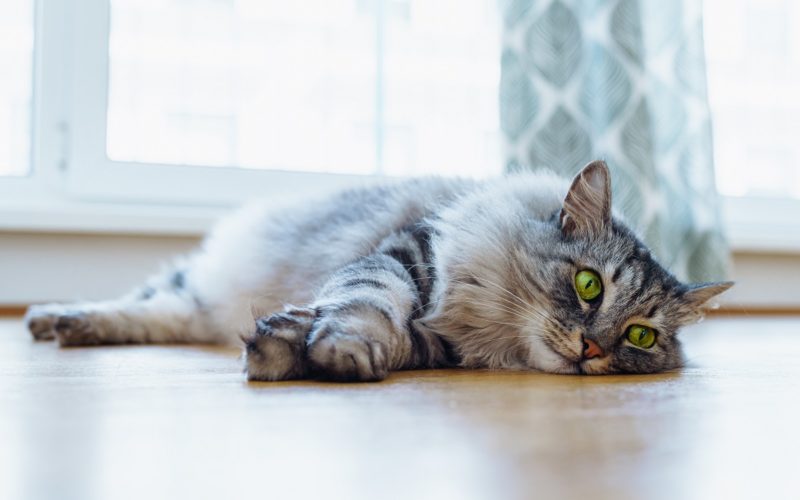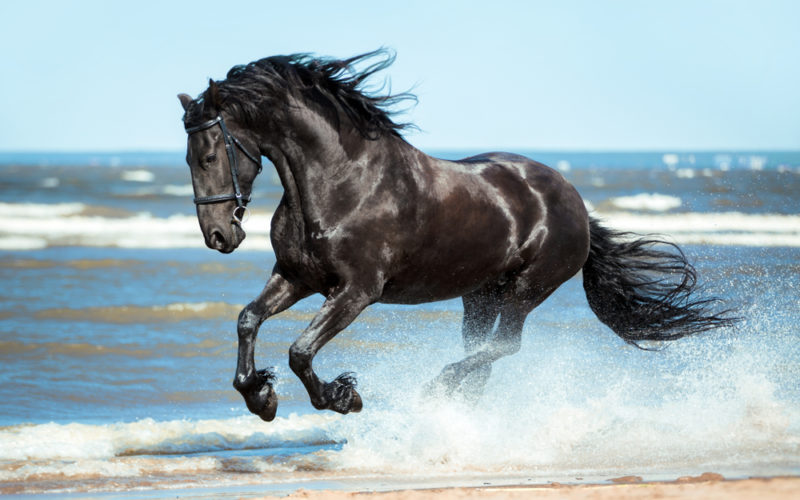Rare and dangerous, feline dysautonomia (also known as Key-Gaskell Syndrome) is a severe nervous disorder that typically affects cats under three years old. 1The symptoms are aggressive, the treatments are varied, and the mortality rate is high. This is one serious illness, and all cat owners should know the signs and symptoms of this deadly disorder.
So what do you need to know about dysautonomia in cats?
This article will dive into the history, symptoms, and treatments of feline dysautonomia to provide you with the knowledge to stay vigilant. We all want to protect our precious kittens the best way we can, so read on to find out the vital information to keep your pet safe.
The History of Feline Dysautonomia
In 1982, the first cases of feline dysautonomia were reported in the UK, where it gained its name secondary name, “Key-Gaskell Syndrome,” named after the scientists who discovered the disorder. The outbreak in the UK lasted until 1986, but the disorder has since appeared in various countries around the world, including:2
- The United States
- New Zeland
- Dubai
It’s believed feline dysautonomia may be correlated to specific geographic regions, as there have been more reported in the midwest and western United States, in addition to specific areas of the UK.1
How Feline Dysautonomia Affects Cats
Understanding a little about your cat’s body can help you understand the effects of feline dysautonomia. While the disorder can only be properly diagnosed by a veterinarian, some background can allow you to pick up on the interrelated aspects of this rare illness.
Feline dysautonomia affects your cat’s automatic nervous system. These are the nonconscious, involuntary systems that control body functions, such as:
- The sympathetic nervous system – You can consider these the “fight or flight” reactions. Heart rate, pupil dilation, aspects of intestinal digestion, and blood vessel dilation. When these systems are properly functioning, your cat’s instinctual responses to stimuli—such as birds or loud noises—will activate automatically.4
- The parasympathetic nervous system – When your cat’s not reacting to anything in particular, their parasympathetic nervous system should function to keep their internal rhythms normalized and consistent. This includes normal digestion, rest, respiration, and energy conservation.4
The disorder causes a variety of disfunction within both the sympathetic and parasympathetic nervous system, and while any age and breed of cat can be affected, it’s more common in younger cats. It’s also worth noting that dysautonomia has been diagnosed in dogs, hares, and horses, in addition to cats.3
Causes of Feline Dysautonomia
Little is known about the causes of the disorder. Despite nearly 40 years of research and diagnoses, the triggers, risk factors, and sources of feline dysautonomia are still relatively mysterious.
That said, there are many working theories and correlations attributed to feline dysautonomia, including:
- Genetics predispositions – Cats are vulnerable to a number of genetic disorders simply due to their DNA. These diseases include feline lower urinary tract disease (FLUTD), Manx syndrome, heart disease, and diabetes. Genetic testing can be done on cats, but none as of now can predict feline dysautonomia.7
- Autoimmune diseases – An autoimmune disease is the result of an overactive immune system attacking healthy tissues, cells, or organs in the body. Though feline dysautonomia is not considered an autoimmune disease, its causes may be related to these diseases.
- Geographic location – Feline dysautonomia outbreaks have often been contained regionally. Outbreaks in Scandanavia, the UK, and the United States, point to a geographical component to the disorder.5
- Botulism – This rare condition leads to cat paralysis and may also have some link to feline dysautonomia. Botulism is caused by ingesting meat contaminated by the clostridium botulinum bacteria. Once ingested, the bacteria releases a dangerous toxin, binding to nerves, and causing paralyzing effects.8
Whatever the root cause of feline dysautonomia, the disorder is quite rare and poorly understood by modern veterinary standards.
Symptoms of Feline Dysautonomia
It may be hard to recognize dysautonomia because of its wide-ranging symptoms. Additionally, the effects this disorder has on the nervous system are varied, and all of the symptoms may not be immediately noticeable.
Symptoms are known to develop rather quickly in some cases, becoming severe in as short as 3 or 4 days.1 The severity of many dysautonomia symptoms calls for immediate veterinary assistance. Whether you think your kitty is suffering from this nervous system disorder or not, you should visit your vet whenever serious symptoms arise.
Some of the most common symptoms include:
- Loss of appetite – Dysautonomia can affect normal digestive functions, resulting in a loss of appetite, weight loss, and constipation in kitties. You should always pay close attention to how your cat behaves around their food. If they’re anything other than excited for their dinner, you’re likely dealing with a health problem (though not necessarily dysautonomia).
- Incontinence or severe diarrhea – The parasympathetic functions of defecation and urination are obstructed by the disorder, causing a kitty to struggle to do their business.
- Muscle loss and weakness – Dysautonomia can cause your cat to lose muscle mass and even struggle to move. This weakness may be due to the depression of the nervous system and the inability to properly absorb nutrients from food.
- Megaesophagus – Is your cat regurgitating the food they’ve just eaten? It could be because they’re suffering from megaesophagus. Megaesophagus refers to an enlargement of the esophagus, disrupting the normal functions of ingesting food.9 This can be caused by a variety of illnesses and obstructions, though it is a frequent symptom of dysautonomia.
- Dry nose and coughing – If your cat’s mucous membranes are not providing proper moisture to their body, they may suffer from a dry nose as well as coughing or hacking.
- Dilated and unresponsive pupils – On an average day, you may see your cat’s pupils go from full-moon circles to tiny slits, depending on the light and stimuli around them. When suffering from dysautonomia, a cat’s pupil dilation may remain unchanged and unresponsive to light.
- Third eyelid protrusion – Most often, you’ll rarely see your cat’s third eyelid. These inner eyelids are located beneath the outer lids and are used to protect the cornea from debris and facilitate the proper distribution of tears across the surface of the eye.10 The mechanisms of the third eyelid are controlled by the parasympathetic nervous system, and may not retract properly if your cat is suffering from dysautonomia.
- Low energy and emotional distress – When a cat is feeling unwell, they also suffer mentally. The toll that dysautonomia takes on a cat’s body can also lead them to appear dulled or emotionally down. For cats with low energy or emotional issues, full-spectrum CBD products can be a natural way to support their health. It’s not a medical cure, but it is a natural way to provide support for your furry friend. If you’re cat also experiences separation anxiety and you wonder, “how long can you leave a cat alone?”, CBD can provide support in this aspect as well and help aid in the anxiety.
What links these varied symptoms together is an overall dysfunction of nervous system responses. Dysautonomia’s powerful assault on your cat’s nervous system can leave them totally incapacitated, dealing with several serious symptoms at once. When the daily functions of your cat’s body are impacted, further health complications can quickly follow.
Treatments for Feline Dysautonomia
There is no definitive treatment or cure for dysautonomia. As of now, prognoses are not very positive for cats with feline dysautonomia. If a cat does survive, they may suffer from permanent health issues for the rest of their lives.
That said, some veterinarians have found helpful methods to treat the symptoms of dysautonomia. Current treatment regimens may be able to provide a cat with a fighting chance against the illness, despite a serious diagnosis.
The following treatments have been utilized by veterinarians in the fight against feline dysautonomia:
- IV Fluids – The first battle when fighting dysautonomia is providing adequate hydration to your cat. If they’ve gone several hours without drinking or been unable to keep fluids down, an IV can provide life-saving liquids directly to their bloodstream.
- Feeding tubes – After assessing hydration, it’s imperative to begin getting nutrients into your cat’s body. Because the disorder can disrupt digestion, feeding tubes are the best option for food delivery.
- Laxatives – If your cat is suffering from constipation, a vet may prescribe laxatives to get their bowels functioning properly again. Your cat may also require manual bladder expression to begin relieving themselves properly. These procedures should only be done by a licensed veterinarian. You can cause serious harm if you don’t know what you’re doing.
- Medications and antibiotics – Various medications may be used depending on the severity and symptoms involved. If your cat is dealing with related infections, such as pneumonia, further antibiotics may be necessary to help aid their respiratory systems.
Additionally, cats dealing with mucous membrane and tear production issues may require humidified air and artificial tears to provide more comfort.
While the outlook for feline dysautonomia may look grim, cats have survived for years after contracting the disorder. Through proper treatment and early identification, the disorder can be managed. With follow-up care, your cat can look forward to spending the rest of their 9 lives with you.
Canna-Pet: Veterinarian Approved CBD
From understanding, “what is mange?” to finding ways of comforting your cat during dysautonomia, there isn’t much we wouldn’t do for our furry friends to ease them of any discomfort. Dysautonomia is certainly a scary diagnosis for any cat owner. Fortunately, the disease is atypical, and hopefully something you’ll never have to worry about. While uncommon nervous system disorders may not be a daily worry, your cat’s overall health and happiness are always top priority, that’s why we recommend Canna-Pet to any cat owner.
If you’re looking for a simple, all-natural way to bring support to your cat’s health, Canna-Pet’s full-spectrum CBD capsules are the perfect daily boost. These safe, non-psychoactive supplements deliver synergistic cannabinoids that can leave a feline feeling positively purr-fect. Visit Canna-Pet today to find out why veterinarians recommend us and cats love us.
Sources:
- PetMD. Key-Gaskell Syndrome in Cats. https://www.petmd.com/cat/conditions/neurological/c_ct_dysautonomia_key_gaskell_syndrome
- PubMed. A cluster of cases of feline dysautonomia (Key-Gaskell syndrome) in a closed colony of cats. https://pubmed.ncbi.nlm.nih.gov/7610539/
- Science direct. Dysautonomia. https://www.sciencedirect.com/topics/veterinary-science-and-veterinary-medicine/dysautonomia
- Animal Almanac. Getting On A Cat’s Nerves: A Look Into the Feline Nervous System. https://animalalmanacblog.wordpress.com/2016/09/07/getting-on-a-cats-nerves/
- National Library of Medicine. Feline dysautonomia in the Midwestern United States: a retrospective study of nine cases.https://pubmed.ncbi.nlm.nih.gov/17950646/
- Merck Veterinary Manual. Dysautonomia in Cats. https://www.merckvetmanual.com/cat-owners/brain,-spinal-cord,-and-nerve-disorders-of-cats/dysautonomia-in-cats
- Pet MD. 7 Common Genetic Disorders in Cats.https://www.petmd.com/cat/slideshows/7-common-genetic-disorders-cats#slide-1
- VCA Hospitals. Botulism in Cats.https://vcahospitals.com/know-your-pet/botulism-in-cats
- Cat World. Megaesophagus in Cats.https://cat-world.com/megaesophagus-in-cats/
- Scientific American. Why do cats have an inner eyelid as well as outer ones?.https://www.scientificamerican.com/article/why-do-cats-have-an-inner/





